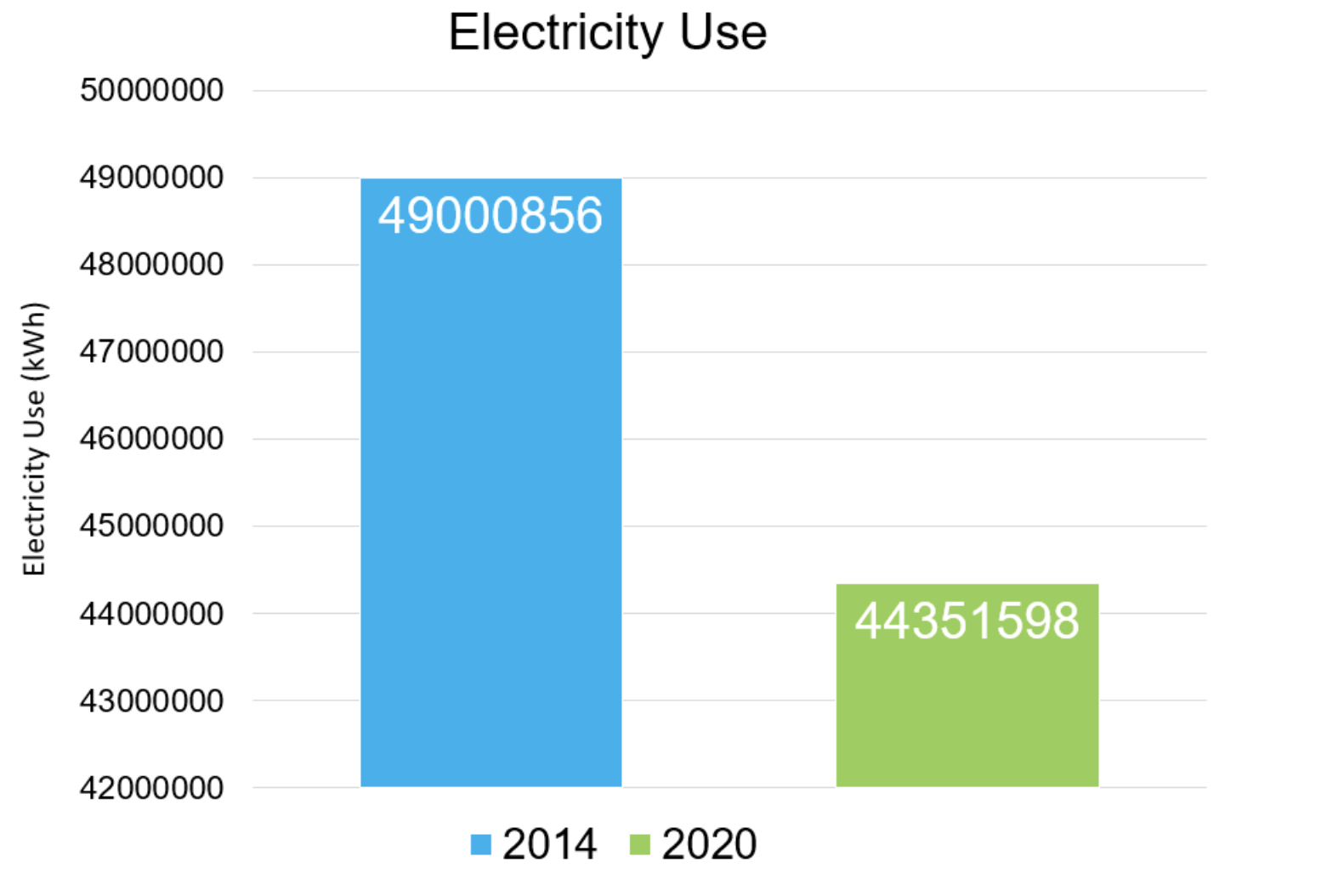L.A. Community College District Doubles Down on Sustainability with Resolution to Achieve Zero Carbon on Campus By 2040
10%
Electricity Reduction Since Ownership
44%
Water Reduction Since Ownership
2021 Innovation Awards: Industry Leadership (Public) Winner
“Public higher education systems have a duty to protect and uplift the communities they serve and can do so through reducing their carbon emissions. Achieving full decarbonization by 2040 would have savings beyond greenhouse gas reductions—it could significantly reduce the environmental burden on some of California’s most vulnerable communities and help improve their everyday quality of life.”
ARIS HOVASAPIAN
Utility Program Manager, Los Angeles Community College District
CHALLENGE
The single largest community college district in the United States, the Los Angeles Community College District (LACCD) educates a diverse and multigenerational student base from nine campuses. Five of LACCD’s colleges lay in designated disadvantaged or “frontline” communities with the highest levels of vulnerability to climate change in California. A longtime proponent of sustainability, LACCD recently doubled down on sustainability and clean energy commitments, passing its Clean Energy & Sustainability Resolution in July 2020 to establish the most aggressive and comprehensive sustainability goals in the California community college system: 100% renewable electricity by 2030 and 100% carbon free by 2040.
Originally slated for a decision by the Board of Trustees in April 2020, the resolution’s final review was delayed to July due to the onset of the COVID-19 pandemic and redirection of LACCD resources toward safety and relief protocols. Efforts intended to support the resolution’s education and outreach goals were also significantly impacted by safer-at-home orders: A Climate Corps Fellow, whom LACCD invited in early 2020 to focus on climate crisis outreach, had planned numerous in-person events that had to be transitioned to virtual platforms where possible; other activities were cancelled altogether.
STRATEGY
LACCD’s sustainability resolution is the latest for the district’s long-running environmental stewardship. In 2002, the district passed a resolution to pursue LEED certification on all new construction projects, to have those projects perform 20% better than code-mandated energy baselines and to have 15% of energy come from renewable sources. Over the years, LACCD has invested in sustainability measures across dozens of projects and has earned LEED certification on more than 50 buildings. In addition to decarbonization commitments, the district’s most recent resolution pledges $75 million toward projects to improve energy efficiency, invest in additional on-site renewable energy and electrify district infrastructure and supporting equipment.
The resolution, which includes considerations for zero waste, carbon emissions tracking, stormwater retention and other sustainability measures, aims to expand upon its current efforts to better serve frontline communities using fair and equitable transition strategies. LACCD plans to take on a robust stakeholder process for the design, review and implementation of sustainability plans by establishing steering committees at each of its nine colleges to gather direct feedback and customize the approach to meet the diverse needs of each college and the communities they serve. Steering committees will be comprised of faculty, staff, students and community members, and are planned to be established by the end of the first quarter of 2021.
Meanwhile, to further sustainability efforts while most stakeholders were working or learning from home in 2020, LACCD established opportunities for remote engagement with staff, faculty and students, including a speaker series in the fall, biweekly newsletters, climate crisis training for operations staff and other education and outreach efforts.
IMPACT
Since 2014, LACCD has completed 51 state-funded energy efficiency projects that are expected to provide nearly $1 million in relief to energy costs. Meeting the targets laid out in the district’s latest resolution will set LACCD ahead of schedule to achieve clean energy goals prescribed by both the State of California and the entire California Community College system, effectively placing LACCD near the forefront of both state and national decarbonization efforts and significantly reducing the environmental burden on California’s most vulnerable communities.
To meet its newly established goals, LACCD intends to first focus on efforts to achieve decarbonization through energy efficiency opportunities, including construction projects, outreach and education efforts and similar measures. Plans include LED lighting upgrades, HVAC upgrades, retro-commissioning, building envelope improvements and plug-load reduction measures. Additionally, LACCD aims to engage and encourage end users and building occupants to interact with buildings and building systems in ways that value energy conservation and sustainability.
LACCD staff did find reductions in energy cost and consumption as a result of campuses being mostly shut down due to COVID-19, with reductions of 50% at some locations. In addition, LACCD developed procedures for evaluating the possibility of specifying all-electric new-construction buildings in the design phase and evaluating options to replace HVAC equipment with all-electric alternatives.
LACCD is currently working to complete its first carbon emissions inventory, performed at LA City College. Staff will take lessons learned from this exercise to expand the scope to cover other colleges and perform carbon inventories on an annual basis going forward with the goal of achieving net-zero carbon.










